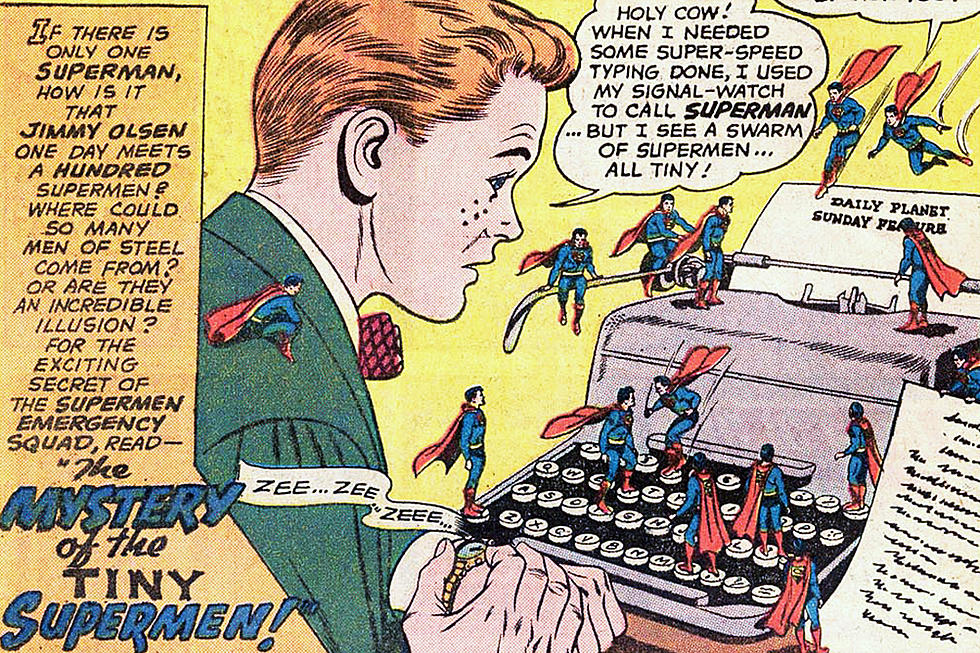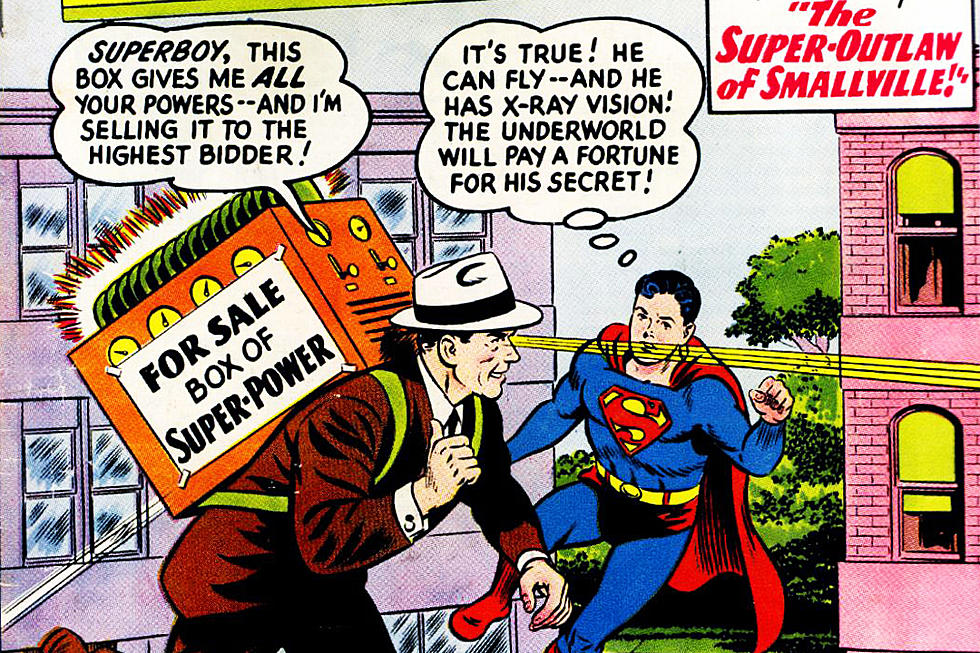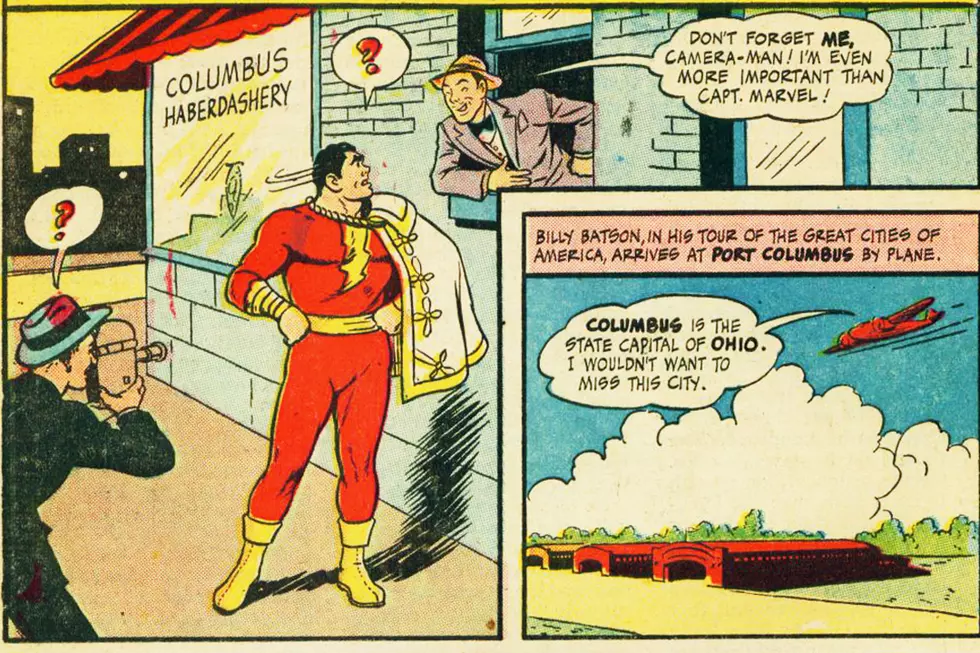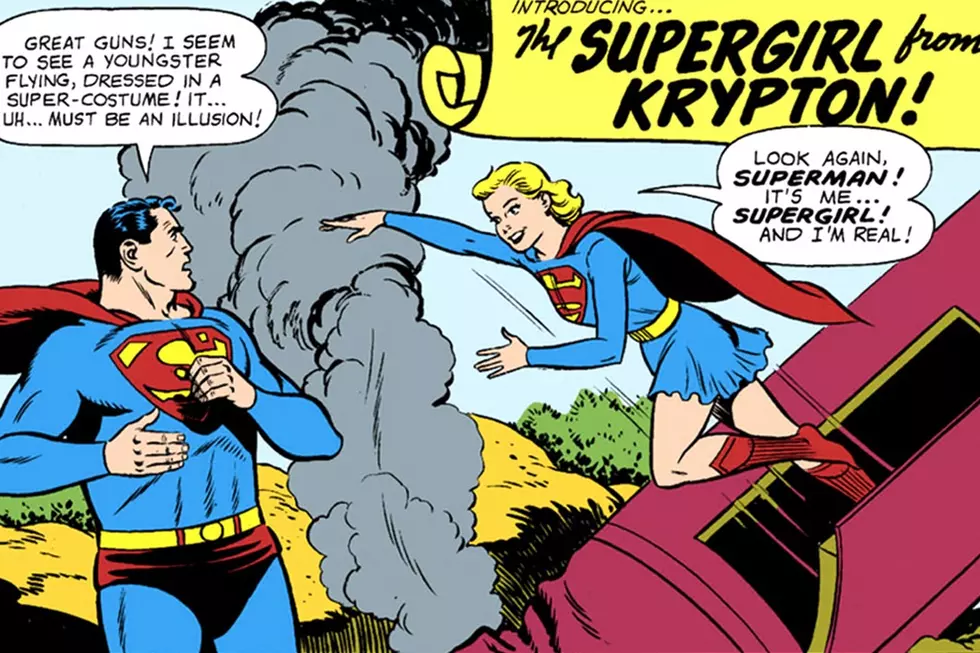
Fatman: The Human Flying Saucer — The Silver Age Madness of Otto Binder and C.C. Beck
In 1939, Otto Binder and C.C. Beck created Captain Marvel for Fawcett Comics, and for a while, he was the single most popular super-hero in the world. So popular, in fact, that his adventures were outselling even Superman's, which led pretty much directly to a lawsuit from National (the company that would later become DC) that successfully alleged that Captain Marvel was infringing on their existing copyright of a dark-haired guy in a cape who went around punching out a bald scientist.
That story is pretty well-known, and rightfully so, as Binder and Beck had not only created one of the most enduring characters in comics, but pretty much set the tone for what super-hero comics would be like for the next 25 years. It doesn't hurt that Binder was brought into the fold at DC to be one of the major architects of the era -- as a writer under Mort Weisinger, he introduced Supergirl, Brainiac and was one of the primary writers for Jimmy Olsen, who bore a striking resemblance to Captain Marvel's sidekick Tawky Tawny, right down to the green coat, bow-tie and red hair -- but their collaboration is one of the major comics of the Golden Age.
What a lot of readers don't know however, is that the two creators reunited at the height of the Silver Age for a new project under the short-lived Lightning Comics brand: Fatman the Human Flying Saucer.

And it is both completely insane and absolutely amazing.Released in 1966, Fatman was a product of the same sort of aesthetic that can be seen in books like Richard Hughes and Ogden Whitney's Herbie and Bob Haney and Ramona Fradon's Metamorpho, and it was billed as starring "the only comic hero with 3 identities." In his civilian identity, the title character was Van Crawford, who was essentially a spoof of the TV version of Bruce Wayne: a fabulously wealthy young man with an incredible knowledge of a variety of subjects, including bird-watching, chess, stamp collecting and martial arts. The key difference, aside from the fact that Crawford's parents were very much alive, was that -- as you might've guessed from the title, he was tremendously fat. So fat, in fact, that his obesity actually qualified as a super-power, giving him incredible density that made him invulnerable to harm and super-strong, talents that he put to good use as Fatman, the hero who tipped the scales... of justice.

So far, pretty standard fare for the Silver Age, and only slightly more heavy (har har) on the silliness than your average mid-60s Legion of Super-Heroes story. But it starts to get crazy with the introduction of the third identity, which came about when a friendly alien landed and, as one does in these sorts of situations, gave him a chocolate malt that bestowed the ability to turn into The Human Flying Saucer:

After the complete madness of the premise, one of the first things to note about Fatman is that Binder and Beck weren't shy at all about reminding people that they were the ones behind the wildly popular Captain Marvel back in the day.
And I'm not just referring to the fact that Fatman is essentially wearing a plus-size version of Captain Marvel's costume in green, with the lightning bolt moved to the cover, or even the fact that in the first issue, he gets a sidekick who looks exactly like a malnourished Billy Batson:

No, while those are pretty telling, I'm talking about the fact that Binder and Beck explicitly identify themselves as "the creators of the original CaptainMarvel" four or five times in the comic itself, including the cover, the splash page, the letter column and the next issue blurb.
This might just be interesting to me, but I find it fascinating that even in the Silver Age, when comics were directed specifically at an audience of children that was assumed to turn over every few years, these creators were referencing their work on stories that hadn't been published in over a decade. It's one of the first examples in comic book history of creators capitalizing on the appeal of nostalgia, and -- with the admission in the letters page that Binder was writing "sparkling DIALOGUE in the camp category -- going after the same kind of adult market that had made the TV version of Batman such a huge hit that same year.
Unfortunately, it wasn't a big enough hit to last longer than three bi-monthly issues, although to be fair, they are massive slabs of comics. One of the hooks for Lightning was that every comic they published -- which, as far as I can tell, amounts to a grand total of five comic books, with two issues of Binder and Carl Pfeufer's Todd Holton: Super Green Beret rounding things out -- was a 64-page giant, meaning that Beck was penciling, inking, coloring and lettering over fifty pages of comics in each issue. Even with only three of them, that's pretty impressive.
Especially considering the absolute heights of madness the stories got to over the course of their abbreviated run. It's crazy from the beginning, but in the second issue, Binder and Beck go all out when they pit Fatman (and his sidekick, the 89-pound weakling above who becomes a "shining knight" named Tinman) against The Awesome Foursome:

Like the two foot-tall Thunderer who showed up in the pages of Metamorpho as Bob Haney's riff on Galactus, the Awesome Foursome were clearly meant as a parody of Marvel's Fantastic Four, which at the time was revolutionizing comics by doing pretty much the exact opposite of what Binder and Beck were doing here.
As for this story, it's set into motion when Fatman discovers that his diet has led him to be too fat to fly:

This, incidentally, is another key point about Fatman's place in history: while most Silver Age comedy characters would've used "Fatman needs to lose weight!" as the premise of an entire story, it's just the prologue here. The issues were advertised as having six stories, but in reality, they were just six eight-page chapters of a larger, more clearly defined arc. Six stories, each a chapter of an arc larger than the usual comic? I wasn't kidding when I said Binder and Beck were ahead of their time.
Anyway, the connection this particular story has to the rest of the issue is that after the alien who gave Fatman his powers shows up and forces him to go on a diet -- a space diet -- he also provides a warning about a renegade ex-dictator from Mars named Brain Man:

As you might expect, Brain Man has vast (and completely unddefined) mental powers, of which "why you hittin' yourself" is the merely the first. He can also create ice, make thin people fat, hypnotize people all over the world into carrying out his bidding, and create The Psycho Bomb:

Fortunately for the planet Earth, he turns into a baby whenever he gets splashed by water. And yes: The kid who looks like Billy Batson also says "holy moley" all the time. I told you they weren't playing around with their self-references.
Before Fatman can take a baby into custody so that it could pay for its crimes (which is something that he definitely intends to do), Brain Man Baby is kidnapped by the next player in our drama, Lunita the Moon Witch, who lives on the moon, casts spells with her magic moon-guitar, with which she can also see the future:

So sweet is her magic guitar playing that it summons Grollo the Gnome from his home at the center of the Earth, giving the group a stand-in for the Human Torch...

...though apparently not one that is all that familiar with the concept of "pants."
Finally, each member of the team attempts to create a monster that can match Fatman's strength, but after they all fail individually, they cooperate to make Syntho the Patchwork Man...

...who is, all things considered, a pretty awesome version of the Thing.
This gives them the edge initially...

...but Fatman and Tinman eventually figure out how to work things to their advantage. Syntho gets taken out by teamwork (meaning that they take turns punching him rather than just trying to both punch him at once), Brain Man (who is no longer a baby for reasons that are never actually discussed) gets a battering ram made from a tree trunk upside the head, and Grollo gets offered a job and becomes Fatman's personal chef.
As for Lunita, she gets what is quite possibly the greatest and most ignominious defeat of all time:

"You see, against women, you have to use a different method! They don't understand logic... or fists... like men do!"
At this point, I'm honestly not sure if that's Binder indulging in the campy, tongue-in-cheek misogyny of the Silver Age or taking a direct swipe at Stan Lee for constantly writing Fantastic Four dialogue where Reed Richards told Sue Storm to "stop acting like a wife," but either way it's hilarious.
And in the next issue, Fatman fights a gang of spies named S.A.T.A.N.
That's the worst thing about Fatman being such a short-lived comic. Not just that it was funny, but that it was one of the last gasps of that particular sort of Golden and SIlver Age storytelling that reveled in having absolutely no limits on how downright weird things could get.
More From ComicsAlliance









